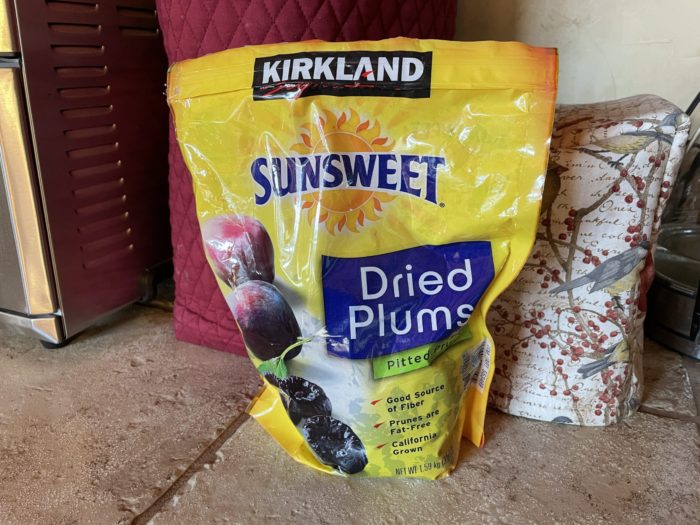May always reminds me of my mother, but not just because of Mother’s Day. May is also National Osteoporosis Awareness and Prevention Month. For the last ten years of her life, my mother suffered significant disability from having osteoporosis.
People diagnosed with osteoporosis have thin bones. Their bones become weak and more likely to break. Nearly 54 million Americans have low bone mass or osteoporosis, according to the National Osteoporosis Foundation (NOF), a health organization dedicated to preventing osteoporosis and broken bones through awareness, education, and research.
This silent but devastating disease affects women more than men. Women have a 50% chance of suffering a hip, spine, or wrist fracture during their lifetime, while nearly 30% of men will also experience a broken bone from osteoporosis. If you are female, the likelihood of you breaking a bone from osteoporosis is equal to your risk of having breast, uterine, and ovarian cancer COMBINED.
Osteoporosis-related fractures aren’t just painful; they can be deadly. One in four women and one in three men will die within one year of experiencing a broken hip.
My mother broke her left wrist when she was 74 years old when tripping on a curb while trying to catch a bus in downtown Seattle. Four years later, she fell when getting out of bed in the middle of the night, breaking her left hip.
She insisted she was fine, walking on it for 2 weeks before the pain drove her to see a doctor. By that time, the bone edges had slipped out of place, leaving her with one leg an inch shorter than the other for the last 10 years of her life.
Although its complications show up in old age, osteoporosis can start in childhood. The thinner your bones are when young, the more likely you’ll experience a fracture later.
We build nearly 90 percent of our peak bone mass before turning 20 years old. In middle age, that process begins to reverse. Women lose 1% of their bone mass every year, doubling to 2% yearly during the first few years of menopause.
Last month I had my first bone density scan. It showed that I have already lost significant bone mass, almost enough to need bone-building medications to prevent fractures. I now eat 6 dried plums daily to boost my bone mass.
The evidence for plums is remarkably compelling: eating 50 grams (5–6) of dried plums daily reverses bone loss in both men and postmenopausal women! In multiple studies over the past 7 years, postmenopausal women who ate 50 grams of dried plums daily (5–6 large dried plums) had very little bone loss. Despite the extra calories, their weight and blood sugar remained stable, most likely because of the high fiber content of the plums.
Find out more about osteoporosis at the National Osteoporosis Foundation website, www.nof.org.
Here are 6 Tips to Keep Your Bones Strong:
- Get adequate calcium and vitamin D.
Green leafy vegetables like broccoli, Brussels sprouts, and kale are good sources of calcium. So are dairy products like milk and yogurt. A calcium-rich diet is more effective at preventing osteoporosis than taking calcium supplements. However, if you take prescription bone-building medicines, you should take a calcium and Vitamin D supplement.
- Do weight-bearing activities.
Walking, cycling, dancing, and even gardening can help keep your bones strong. Activities like tai chi and lifting light weights strengthen your thigh muscles and improve your balance, which helps prevent falls.
- Don’t smoke.
Smoking cigarettes accelerates bone loss. My mother smoked for 68 years, since age 18. Stopping smoking could have helped her avoid the fractures which plagued her later years.
- Eat dried plums (prunes) daily.
Dried plums significantly increase bone mass in both men and postmenopausal women. Dried plums have a natural laxative effect, so I suggest starting with 1–2 plums daily. Increase the amount every week until you get to the optimal dose of 5 large or 6 small dried plums daily.
- Track your bone density.
Measuring your bone mass helps determine how likely you are to have a bone break in the future. If your bones are too thin, future bone loss can be slowed with medicine and other strategies, like calcium, vitamin D, and dried plums. My mother never knew her bones were thinning until she broke her wrist. Earlier intervention could have prevented future fractures.
- Take your medicine.
There are several bone-building drugs available to treat significant bone loss. The most common medicines for osteoporosis are tablets taken once weekly or monthly. Other options include injectable medicines. The most effective medication is alendronate (Fosamax®) tablets, taken for up to 5 years. If bone loss is severe, alendronate may be continued indefinitely.


